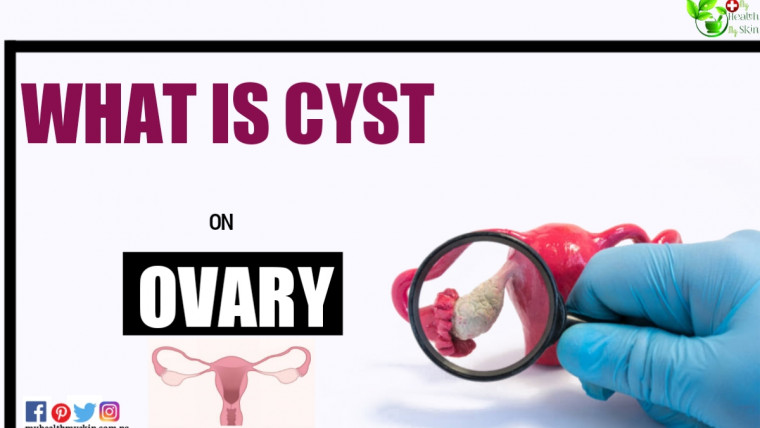Pregnancy is the most responsible period in the life of any woman. Discharges from the genitals are almost always a cause for concern, so it is important to know the mechanisms of their formation, types and possible consequences for the body.
In the absence of pregnancy, the cervix constantly produces mucus, and several types are produced during the menstrual cycle:
- The first half of the menstrual cycle. The activity of the whole organism, especially the reproductive system, is aimed at the release of the sperm cell from the ovary and its union with the sperm. To do this, the female body produces large amounts of clear secretion to facilitate the movement of sperm;
- The second half of the menstrual cycle. During the fertilization of a sperm cell, a woman’s body prepares for its direct injection into the uterus. In this case, an opaque and sticky mucus is produced that protects the uterus from foreign microorganisms.
The first half of the period is regulated by the female sex hormone – estrogen, and the second half – by the hormone progesterone.
In the first trimester of pregnancy, progesterone regulates the activity of the uterus and its derivatives.
It produces small amounts of solid secretions. However, from the thirteenth week of pregnancy, a woman’s body begins to produce a lot of estrogen, so the secretions from the uterus become more abundant and clear.
Normal Discharge During Pregnancy

The course of the first trimester of pregnancy (first 12 weeks) is determined by the influence of the female sex hormone – progesterone.
Initially, it is secreted by the yolk of the ovary during menstruation (it is formed after the rupture of the follicle from which the sperm cell comes out during ovulation).
After fertilization of the sperm cell, the corpus luteum of ovulation grows under the influence of luteinizing pituitary hormone, and then turns into the corpus luteum of pregnancy, which produces large amounts of progesterone.
This hormone helps to keep the embryo in the uterine cavity by blocking its exit from this organ (a thick mucous plug forms in the uterine cervix) and suppresses its ability to build muscle.
Under the influence of progesterone in the first trimester of pregnancy solid, vitreous, colorless, in some cases, whitish diacharge appear.
They can be found in clothes in the form of mucus clots. This can be considered normal only if these discharge have no odor and do not bother the pregnant woman, ie do not cause itching, burning and other unpleasant sensations.
In case of these symptoms, it is necessary to look for another reason, ie to seek the help of a gynecologist without wasting time.
After the first trimester of pregnancy, when the fetus is already strengthened in the uterine cavity and the couple (another name for the placenta.
The placenta is the organ that connects the mother and fetus and provides the fetus with all the necessary nutrients, hormones, biologically active compounds), large amounts of estrogen are produced again. begins.
The main task of this period is the development of the uterus (it is the developing organ of the fetus, so it must constantly increase its size) and the mammary glands (they begin to form new glandular tissue and new milk ducts).
Under the influence of these hormones, in the second half of pregnancy, women experience a lot of colorless and whitish secretions from the genitals.
They should not be attributed to any pathological condition, but at the same time such secretions should not have an unpleasant odor and should not cause itching, burning and other manifestations of discomfort.
The presence of these symptoms is very important, because the appearance can be deceptive, and under them can be hidden hidden diseases.
White Discharge During Pregnancy

White discharge most often occurs during pregnancy. They can cause discomfort in women, but only rarely are they associated with any pathological condition.
The discharge contain the following components:
- Mucus. Its source is the innumerable glands of the female reproductive system: the uterus, its neck, the corridor and the uterus itself;
- Microorganisms. In the womb there is always a different composition and each woman has its own microflora. If it is healthy, it is mainly bacteria called lactic acid. The presence of other microorganisms is not a reason to think about the development of any disease;
- Epithelial cells. They cover all the structures of the female reproductive system, are constantly peeled off and replaced with new ones.
Uterine secretions can be both pathological and normal. Usually white secretions are directly related to the menstrual cycle.
In the first half of it, a small amount of watery secretions are observed, which thicken and become more sticky during ovulation and take on a beige color.
Towards the end of the menstrual period, the volume of secretions increases again.
White discharge can also be caused by other factors: after sexual intercourse with the use of hormonal contraceptives.
White pathological secretions can also be associated with infectious diseases such as candidiasis.
White discharge can be considered the first sign of pregnancy. At this stage, they are associated with the effects of the hormone pregesterone.
From the thirteenth week, its effect decreases and, accordingly, the effect of estrogen increases.
During this period, the volume of secretions increases, they are colorless and have no odor.
They do not cause any unpleasant symptoms, such as burning or itching, which is very important for the diagnosis of pathological conditions.
Although such secretions during pregnancy are quite normal, it is necessary to pay attention to their consistency, color and volume.
Changes in these indicators may indicate the addition of infection, hormonal status disorders, diseases of the genital organs.
The most common cause of such changes is candidiasis or cottage cheese secretions of the female genitals.
In this case, the secretions are similar to cottage cheese, smell like beer and are abundant.
Conditionally pathogenic microflora can also be added, as the immune system is weakened during pregnancy.
For the prevention of cottage cheese secretion (fungus), doctors prescribe probiotics to women during pregnancy, including dairy products.
If it is impossible to prevent the development of pathology, special drugs against the fungus are prescribed.
Another source of secretions is bacterial vaginosis. At the same time, they have a watery consistency, colorless shade and a fairly unpleasant odor.
If lower abdominal pain is added to the discharge, this requires immediate hospitalization, as there is a high risk of ectopic pregnancy and miscarriage.
Thus, white discharge in women during pregnancy is quite normal, but it is necessary to pay attention to such indicators as smell and appearance.
Yellow Odorless Discharge During Pregnancy

The presence of jaundice is not the norm, but if there are no other unpleasant symptoms such as unpleasant odor, burning, itching and pain, it may not be a cause for concern.
Otherwise, you should see a gynecologist immediately, especially if the discharge are dark yellow.
There are several reasons for this pathological symptom.
The first is the presence of various inflammatory processes that are exacerbated by pregnancy or other factors.
During this period, immunity is weakened, which allows pathological microorganisms to penetrate the uterus, accumulate there and create this unpleasant symptom.
In addition, discharge can occur as a result of spontaneous abortion. Therefore, it is necessary to react to them as quickly as possible.
The formation of dark yellow discharge may be a manifestation of an allergic reaction to underwear and intimate hygiene products. Certain microorganisms can also cause specific yellow discharge.
If the color of the discharge changes to green, the problem indicates the development of serious disorders. For example, it may indicate the presence of venereal diseases.
They are also characterized by itching, pain during urination, and burning sensations in the area.
If the discharge are light yellow, they are most likely caused by inflammation of the fallopian tubes or ovaries and various bacterial infections in the uterus.
Many infections and inflammatory diseases, which are manifested by specific jaundice during pregnancy, do not occur in connection with the pregnancy that began at this time, they simply worsen.
Therefore, the expectant mother should be thoroughly examined before fertilization.
This will help to determine the condition of the body, identify unwanted pathological conditions and diseases and get rid of them before pregnancy.
Brown Discharge During Pregnancy
During pregnancy, brown discharge can occur unexpectedly in almost all members of the weaker sex. They point to several reasons for the development of this situation.
The first is ectopic pregnancy. When this happens, the sperm cell breaks down. One of the characteristic features of its development is brown secretions.
Bleeding may also occur. Unfortunately, many women do not realize that they are pregnant at this time.
In many cases, the appearance of brown secretions indicates the danger of miscarriage.
In this case, an experienced gynecologist should take all possible measures (surgical intervention or conservative treatment) to save the fetus.
Abortion is a serious complication that occurs only in the early stages of pregnancy. Initially, there may be little bleeding and no painful sensations. However, it does not stop for a certain period of time and increases.
Intense bleeding may occur during miscarriage, they have a deep red, brown color, clotscan be.
To all this is added the infrequent but intense pain in the lower abdomen. In this case, the uterine cavity should be cleansed and the remains of the dead ovum should be removed.
The appearance of brown discharge in the last stages of pregnancy may indicate abnormalities in the function of the placenta. This organ may rupture and small bleeding may occur.
The next cause of such symptoms may be diseases associated with inflammatory processes or erosion of the cervix.
If the date of birth is approaching and unexpected brown discharge occurs, this indicates the onset of labor.
Another important reason for such secretions is the rupture of the uterus. In most cases, it develops in women who have had previous abortions or have cracks in childhood.
Thus, the most common causes of brown discharge are sexually transmitted diseases and erosion of the cervix.
It is necessary to consult a gynecologist to eliminate such pathological conditions. During the rupture of the placenta, bed rest is prescribed, any emotional and psychological loads and hormonal medications are excluded.
Bloody Discharge During Pregnancy
Bloody discharge or secretion is quite common, especially in the first trimester of pregnancy. According to statistics, eighty percent of women complete their pregnancy without any problems during the rest of the year.
There are many reasons for the formation of bloody secretions. For example, an active blood supply to the internal genitals or their hypersensitivity.
This usually occurs after an ultrasound examination with a special vaginal measuring device or the application of a gynecological mirror during the examination.
Such secretions can also occur after sexual intercourse, as irritation of the mucous membranes of the cervix and uterus occurs.
Discharge can also begin with a slight rupture of the pair: a certain amount of blood collects under it. When exposed, it has a light pink hue.
In women, secretions often occur on days when menstruation is observed before pregnancy. They are also observed with pain in the lower back and lower abdomen.
This occurs as a result of hormonal disorders in the body in the early stages of pregnancy, and it is completely safe.
The formation of blood clots indicates the presence of dangerous complications. It is necessary to consult a doctor immediately, as it is likely to be an indication of the risk of miscarriage. If the secretions are brown, it is likely that a hematoma has formed in the body.
During the development of an ectopic pregnancy, a woman may also experience bloody discharge.
Another reason is a “frozen” pregnancy. In this case, spontaneous abortion occurs one week after the death of the fetus in the womb.
One of the rare causes of bloody secretion is water retention.
Then the growth of placental tissue is observed. There is a lot of secretions, but they are completely painless. The result of this situation is the death of the baby.
Bloody secretions are most dangerous in the second and third trimesters of pregnancy.
They can be a sign of pathology, endangering not only the fetus but also the life of the mother.
Bloody secretions can develop in the presence of fibroids, cervical erosion, cervical polyps, genital injuries.
Although in most cases, bloody secretions do not pose any danger to the fetus and mother, it is necessary to consult a specialist in time to prevent dangerous complications and ensure the normal course of pregnancy.
Discharge That Occur In The Early Stages Of Pregnancy

Discharge that occur in early pregnancy can be both normal and pathological. Changes in secretions in the first weeks after fertilization are an inevitable process.
This is due to the increased production of the hormone progesterone in the female body. It ensures that the sperm-fertilized sperm adheres to the uterine wall, participates in the maintenance of the fetus and the formation of the placenta.
At this time, the volume of vaginal secretions decreases, they become colorless and sticky.
This nature of the secretions contributes to the formation of a protective barrier in the cervical canal, which protects the uterus from pathological microorganisms.
After the tenth day of fertilization, bloody secretions may appear in the uterus, as well as non-pathological conditions.
This is because the fertilized sperm cell attaches to the uterus. This organ has a branched vascular and capillary network that can be slightly damaged during embryonic fusion.
This condition is called implantation hemorrhage and lasts for more than two days. Stronger and more persistent bleeding indicates the development of a pathological condition.
Yellowish, brown, greenish, curd-like discharge with an unpleasant odor are considered pathological.
Yellowish discharge from the uterus with a sharp and unpleasant odor indicate the presence of inflammation in the uterus and its derivatives. Inflammatory processes in the internal organs during pregnancy are very dangerous, because they often lead to pregnancy disorders.
If bloody discharge is observed for three days, it indicates the presence of serious complications and requires immediate medical attention, as this is one of the signs of the development of miscarriage.
This symptom is often accompanied by tightness in the lower abdomen, severe pain, nausea, loss of appetite, intestinal dysfunction.
Bloody discharge in the early stages of pregnancy can be a sign of cervical erosion. They are practically always painless and cut in a few hours.
The appearance of dark red, brown or bloody secretions a few days after fertilization may indicate the development of an ectopic pregnancy.
In this case, the blood is secreted after the rupture of the fertilized seed cell. Ectopic pregnancy poses a serious risk to a woman and reduces her chances of becoming pregnant in the future.
Thus, in the early stages of pregnancy, white, homogeneous, sticky and odorless secretions are the norm and should not be a cause for concern, while creamy, yellow, unpleasant smells can be a sign of candidiasis or uterine inflammation.
Large amounts of brown, bloody secretions are also frightening symptoms and require immediate medical attention.
Discharge That Occur In Late Pregnancy

The last period of pregnancy is usually from the 35th week to the beginning of the birth. At this time, the body is actively preparing for the birth of a child.
The secretions have a mucous consistency, milky color, they have no odor. Normally, they do not cause unpleasant discomfort, burning, itching and any other irritation.
Brown and mucous secretions can often form at about 35 weeks before the expected birth.
This is because the lining of the cervix begins to prepare for birth. It softens, then opens slightly and is released from the mucous plug.
This is a sign of the impending birth.
However, if greenish, light red or brown foamy secretions are observed in the last days of the week, this indicates a dangerous complication.
Light red secretions may indicate rupture of the placenta. In this case, you need urgent medical attention.
The greenish foamy discharge observed with itching is most likely a sign of an infection.
In this case, it is very important to eliminate their cause before birth, because otherwise their course may be complicated and there is a risk of infection of the fetus.
Discharge That Occur After Pregnancy
After childbirth, regardless of the method of delivery, a woman secretes blood in the genital tract. Such postpartum discharge are called lochia.
They are caused by the healing process of the inner surface of the uterus. It usually occurs at the junction of the placenta and the uterine wall.
If non-viable tissues are released in time, the postpartum period passes without complications.
It is very important to pay attention to the durability and color of the lochia. Their character changes – over time, discharge decrease and change color:
- Red Lochia:They begin 2-3 days after birth. These are bright red, bloody, large, small blood clots;
- Serous Lochia: They begin on the fourth day after birth. The color of the discharge fades, and with a high content of leukocytes, they acquire a serous-serum (light pink) color. There should be no bright red lochia or hemorrhagic clots during this period.
- White Lochia: They start on the tenth day and last for twenty days. The discharge are yellowish-white or yellow in color, oily, clear, odorless and do not contain blood.
The amount of lochia gradually decreases, they weaken from the third week after birth, and they contain mucus from the cervical canal.
From childhood, discharge are cut off from the fifth to sixth week after birth. From the cervical canal begins to flow only vitreous mucus, which contains isolated leukocytes.
Therefore, discharge that begin after birth and last for a month and a half have nothing in common with menstrual bleeding. They pass independently and do not depend on whether the woman is breastfeeding or whether the child is on artificial feeding. To see more post on Women’s Health click here.

Do You Think It’s Important To Know The Mechanisms Of Discharge During Pregnancy And Their Formation, Types And Possible Consequences For The Body? Comment Here!






